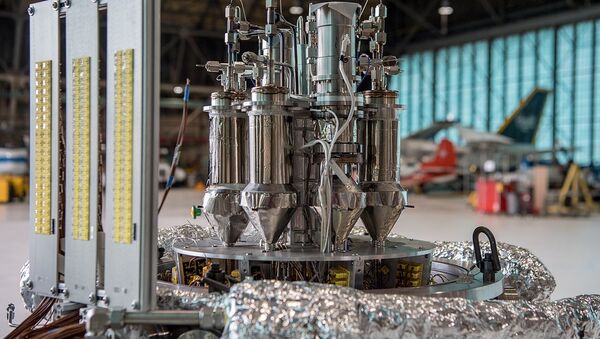The story of nukes and cosmic exploration will open a new chapter just a stone's throw from the Redstone Test Stand, one of the corners of NASA's Marshall Space Flight Center, where in 1958 PGM-11 Redstone became the first to carry a nuclear warhead; three years later, a rocket carried the first American into space.
This time NASA's goal is somewhat different; it has tasked its engineers, led by physicist Bill Emrich, with building the first rocket engine powered by nuclear fission, and is expected to be twice as efficient as the chemical booster alternatives powering the lion's share of rockets today.
One would perhaps argue that space travel is dangerous in and of itself, without a necessity to worry about nuclear repercussions, but for the human missions to the Moon and Mars, already scheduled by the White House, such risks may prove unavoidable.
It may give a certain relief though, that nuclear reactors are not supposed to go off right on the launch pad, but rather up in space, after a conventional chemically-propelled rocket hoists a nuclear-powered spacecraft into orbit. The energy thrust generated by those reactors are believed to be capable of sustaining human outposts on other worlds as well as cutting the travel time to Mars by almost half.
"Many space exploration problems require that high-density power be available at all times, and there is a class of such problems for which nuclear power is the preferred—if not the only— option," Rex Geveden, a former NASA associate administrator and CEO of the power generation company BWX Technologies, told the National Space Council in August.
NASA Administrator Jim Bridenstine went still further, calling nuclear propulsion "a game-changer" and telling Vice President Mike Pence that using the said reactors provides "an amazing opportunity that the United States should take advantage of".
To reach the goal, Emrich and his team have been simulating the extreme conditions inside a nuclear rocket engine at the Marshall Space Flight Center, using massive amounts of electricity, "like in a big microwave oven," instead of triggering a costly fission reaction proper, as NASA did in the '60s.
The goal is to make sure the designed reactor would withstand its own heat and be capable of operating at extreme temperatures of around 4,000 degrees Fahrenheit.
The project that goes by the abbreviation NTREES - Nuclear Thermal Rocket Element Environmental Simulator – was eventually integrated into a more comprehensive programme to study how a nuclear engine could be integrated with the Space Launch System, NASA's next-gen rocket.
The financial aspect has also been successfully dealt with, with hefty sums earmarked for all stages of the nuclear propulsion venture: in 2017, NASA awarded BWX Technologies a three-year, $19 million contract to develop the fuel and reactor components necessary for a nuclear engine, while for the past two years, Congress has allocated a total of $225 million to NASA's budget for the purpose.
For the time being, NASA has been putting an effort into overhauling its regulations to make it possible to launch nuclear propulsion systems.
This August, a White House memo demanded that NASA develop respective safety protocols; which may see the first nuclear engine in space as early as 2024 – the deadline set earlier this year by President Trump for American astronauts to return to the Moon, decades after the successful Apollo missions, before the ultimate goal of setting foot on Mars.
NASA is not alone in its goals to reach the Moon and Mars. The European Space Agency is building a service module for Orion and NASA and has also received commitments from Canada and Japan to cooperate on lunar exploration this year.



